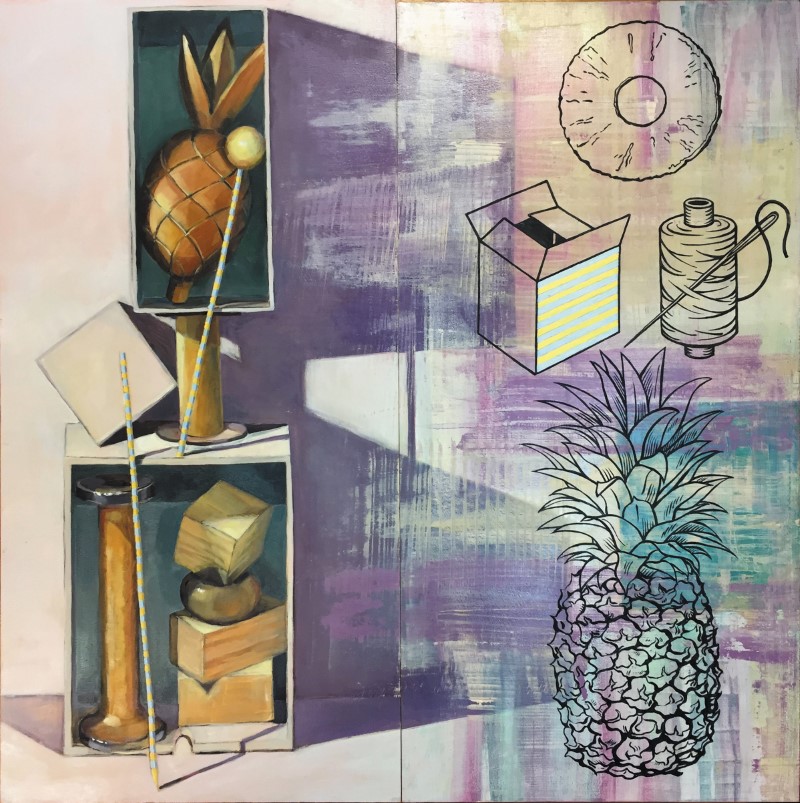The work: Leigh Schoenheimer, The Meaning of (Still) Life: The Wooden Pineapple, 2019. Oil on plywood, 61 x 61cm (diptych total). Courtesy: the artist.
“When people ask me what type of pictures I paint, the answer is still life,” says artist Leigh Schoenheimer. “But that’s just where my works begin.” In the diptych The Meaning of (Still) Life: The Wooden Pineapple, we see an unsteady assortment of objects piled high enough to reach the edge of the canvas, each component tottering alarmingly to one side or the other. Opposite, we see cartoonish renditions of these items, each defined by thick black lines.
The artist’s intention is to scrutinise the very concept of representation, not unlike Modernists such as René Magritte. On one hand we have the notion of representation, of seeing an object. On the other we have the conceptualisation of knowing said object. Though they share equivalencies, they are not the same, and yet can it really be said that this is not a pineapple when they are both made from paint?
Specificity clashes with generalisation as the two boards hang beside each other, the paint from one slowly dissolving into jagged passages of colour as it passes the impenetrable boundary between. Still lifes are a rendition of reality, and here Schoenheimer presents us with the quandary posed by such representations, interrogating the meaning of ‘still life’.

